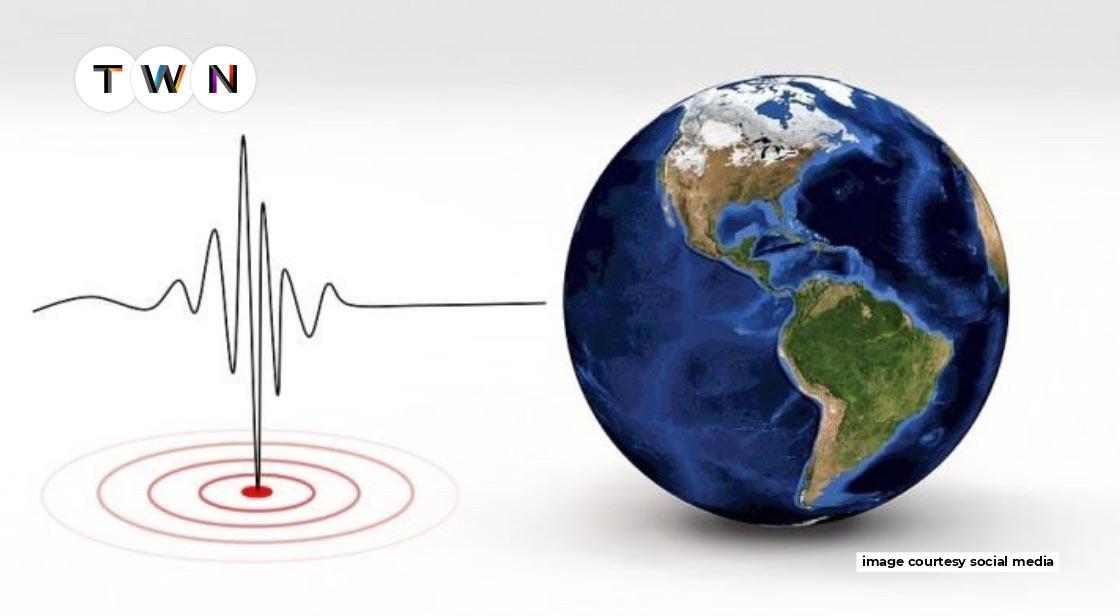Our Earth Keeps Pulsating every 26 Seconds – Does Earth has a Heartbeat?

Blog Post
The Earth shakes every 26 seconds. It's not much, certainly not enough to feel, but it's enough that scientists and researchers on multiple continents detect a measurable "blip" on their detectors. Though this specific pulse is fascinating, the fact that seismicity occurs during a quiet period (i.e., not during seismic events or volcanic activity) is old news. There is always a background of delicate seismic sound around us. This pulsating earth is studied back in the 1960s and here we are talking about it nearly 60 years later. this article will talk about everything you need to know about this 26-second pulsating earth phenomenon. #TWN
As a human, you can feel something pulsating in your chest. That is your heart that pulsates. What if I told you that our mother earth also has a heartbeat and our earth keeps pulsating every 26 seconds. You would not believe me, but soon you will after you finish reading this article. A pulsating planet, and the reasons are unknown. Does this intrigue you? If yes, then read about it as we move forward to solve this mystery.
The Earth shakes every 26 seconds. It's not much — certainly not enough to feel — but it's enough that scientists and researchers on multiple continents detect a measurable "blip" on their detectors. Despite the fact that this pulse has been reported for decades, scientists cannot agree on what is causing it.
Origin of Earth Pulsating Every 26 Seconds
The pulse, or "microseism" in geologist jargon, was reported in the early 1960s by a research scientist named Jack Oliver, who was working at the Lamont-Doherty Geological Observatory at the time. He is known best for his later work, which provided some preliminary evidence for moving tectonic plates. Oliver deduced that the pulse was generated somewhere "in the southern or equatorial Atlantic Ocean" and that it was strongest during the summer months in the Northern Hemisphere (or winter in the Southern Hemisphere).
According to Mike Ritzwoller, a seismologist at the University of Colorado, Boulder, whose team discovered the strange pulse decades later, Jack didn't have the resources back in the 60s like now in 2005. Jack relied on paper records because they didn't have digital seismometers back then.
Gary Holcomb, a geoscientist with the United States Geological Survey, investigated the strange microseism in 1980 and discovered that it is strongest during storms. But his and Oliver's work would be mostly lost in the process, while the continuous seismic drumbeat beneath our feet would go unnoticed.
Then, in 2005, Greg Bensen, a graduate student at the University of Colorado, Boulder, worked with seismic data in his lab. When his advisor entered, he asked him to tell him what he had been working on. According to Ritzwoller, Bensen pulled up some data, and there it was: A strong signal from a long distance away. As soon as we saw it, postdoctoral research scientist Nikolai Shapiro and I realized there was something strange going on, but we didn't know what it was.
Perplexed, the team investigated the anomalies from every angle possible. Was there a problem with their instruments? Or perhaps their analyses? Or was there really seismic activity? Everything indicated to the latter. They were even able to pinpoint the pulse's origin: a specific source in the Gulf of Guinea, down Africa's western coast. They also dug up Oliver's and Holcomb's work and published a study in Geophysical Research Letters in 2006. However, nobody has confirmed the reason for the frequent seismic activity since then. Many people believe it is caused by waves, but others believe it is induced by volcanic activity.
Earth Pulsates Every Time
Though this specific pulse is fascinating, the fact that seismicity occurs during a quiet period (i.e., not during seismic events or volcanic activity) is old news. There is always a background of delicate seismic sound around us. As per Ritzwoller, the sun is primarily responsible for seismic noise. According to him, the sun heats the Entire planet more at the equator than at the poles, causing winds, storms, ocean currents, and waves. When a wave strikes a cliff, its energy is then transferred to the soil. Ritzwoller says that it sounds like you're trying to tap on your desk. It distorts the location close to your knuckle, but the deformation is then transmitted across the entire table. Someone sitting on the other side of the table can feel the vibration if they place their hand, or perhaps their cheek, on the table.
Locating the 26-Second Pulse
Six years later, another grad student, Garrett Euler, arrived in the lab of seismologist Doug Wiens at Washington University in St. Louis. Euler narrowed the origin of the pulse even further to the Bight of Bonny in the Gulf of Guinea. He also argued that vibrations striking the coast were most likely the cause. Wiens explains that when a wave propagates across the ocean, the differential pressure in the water may not have much of an impact on the ocean floor. When it hits the continental shelf, the force distorts the ocean floor (much like banging on a desk deforms the surface) and induces seismic bursts that reflect the wave action. In 2013, Euler presented his research results at the Seismological Society of America's annual meeting.
However, not everyone was completely convinced. In the same year, a team led by Yingjie Xia of the Research center of Geodesy and Geophysics in Wuhan, China, suggested that the 26-second pulse was most likely caused by volcanoes rather than waves. The origin of the pulse is remarkably close to a volcano on the archipelago of So Tomé in the Bight of Bonny. Undoubtedly, there is at least one other location on Earth where a volcano causes a microseism similar to this one. It is in Japan.
More questions remain even outside of the main debate. Specifically, why are we here? There are plenty of other continental margins and volcanoes around the globe that aren't causing seismic pulses, so what makes the Bight of Bonny so unique?
However, sixty years after the pulse was first noticed, no one has figured it out. That could be because seismologists don't consider it to be a high priority. "There are certain factors that we focus on in seismology," Wiens explains. "We want to figure out the structure beneath the landmasses and stuff like that." This is slightly outside the scope of our usual research.
Also Read: Accomplish the Climate goals with Technological Innovations for Climate Change Mitigation
Conclusion
The actual reasons behind this 26-second pulsating earth are still unknown after decades. This shows that we have a lot to know about the Earth. We, humans, have only tapped the surface for centuries. Our earth keeps pulsating every 26 seconds, and this phenomenon will be studied for centuries. If you want to read more about it, you can check out the Wikipedia page about the 26-second pulse of the earth.
FAQs
What is the meaning of pulsating?
Pulsating means a strong rhythmic action. It is a throbbing-like feeling. When our heart pumps the blood, we check for the pulse to record a pulsating feeling.
Why our earth keeps on pulsating?
Some say it is due to the sun’s energy, some say it is due to the ocean waves when they hit the continent shelf. The actual reason behind the pulsating earth is still unknown.
You May Like
EDITOR’S CHOICE












